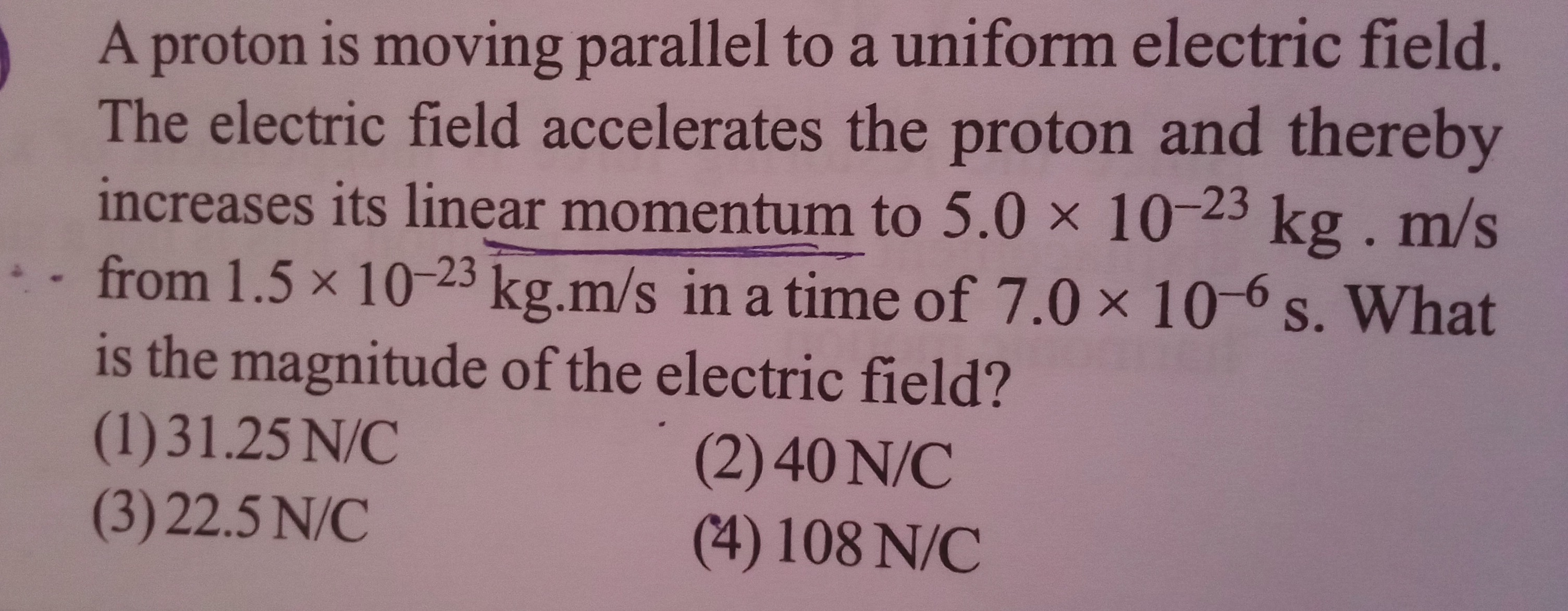Question
Question: A proton is moving parallel to a uniform electric field. The electric field accelerates the proton a...
A proton is moving parallel to a uniform electric field. The electric field accelerates the proton and thereby increases its linear momentum to 5.0 × 10−23 kg. m/s from 1.5 × 10−23 kg.m/s in a time of 7.0 × 10−6 s. What is the magnitude of the electric field?

31.25 N/C
40 N/C
22.5 N/C
108 N/C
31.25 N/C
Solution
The initial linear momentum of the proton is pi=1.5×10−23 kg.m/s.
The final linear momentum of the proton is pf=5.0×10−23 kg.m/s.
The time taken for this change is Δt=7.0×10−6 s.
The change in linear momentum is Δp=pf−pi.
Δp=(5.0×10−23)−(1.5×10−23)=(5.0−1.5)×10−23=3.5×10−23 kg.m/s.
According to Newton's second law, the force acting on the proton is equal to the rate of change of its linear momentum:
F=ΔtΔp
F=7.0×10−6 s3.5×10−23 kg.m/s
F=7.03.5×10−23−(−6)=0.5×10−17=5.0×10−18 N.
The force on a charged particle with charge q in a uniform electric field E is given by F=qE.
The charge of a proton is q=+e≈1.6×10−19 C.
We can find the magnitude of the electric field E using the formula E=qF.
E=1.6×10−19 C5.0×10−18 N
E=1.65.0×10−18−(−19)=1.65.0×101
E=1.650=16500=4125=31.25 N/C.
